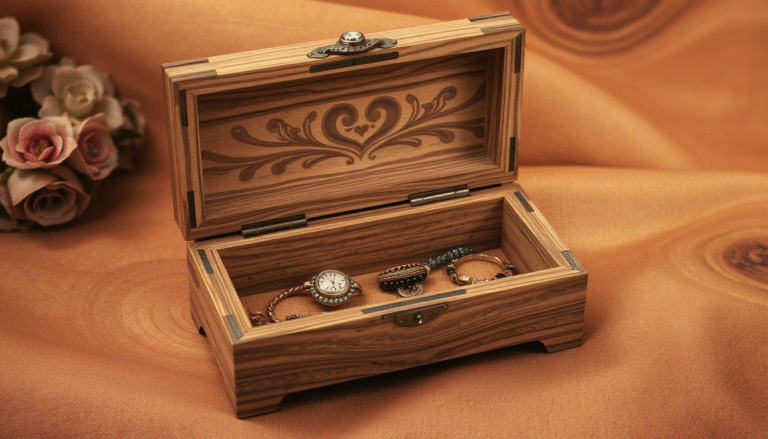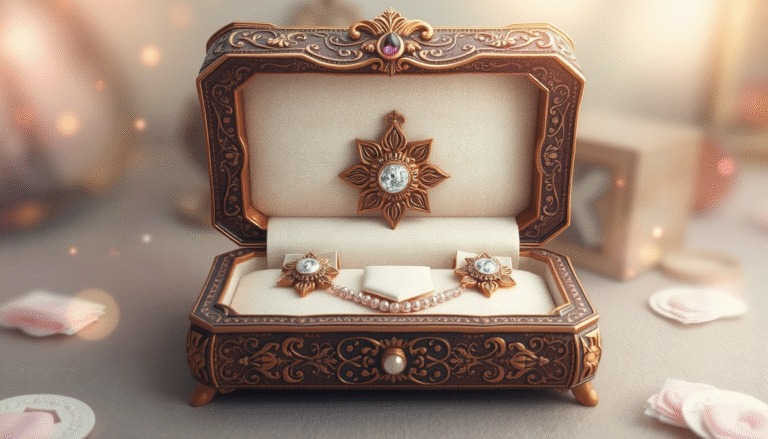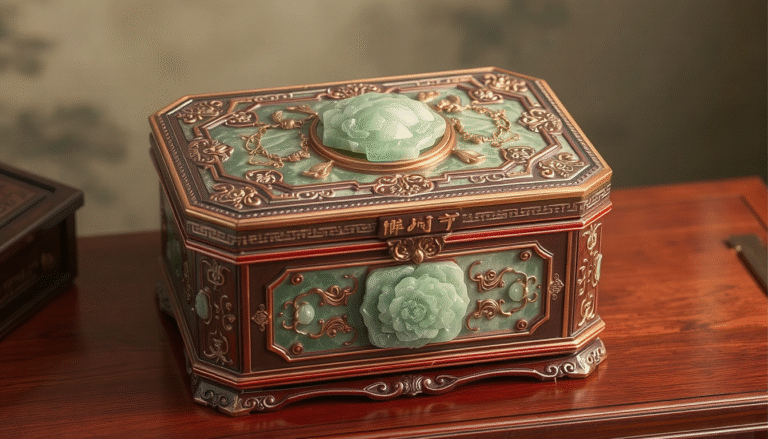Introduction: More Than Just a Box – Smart Storage for Your Treasures
It shouldn’t break the bank to keep your jewelry safe. The trick is finding storage that retains your treasures safe from tangles, tarnish, and dust without a hefty price tag. It is possible to get a good one, for a low price, finding high quality jewellery box.
This guide will help you navigate through your options. We’re avoiding cheap, flimsy choices to show you what really matters. We’ll help you select a low price jewelry box that works well, looks good, and lasts a long time.
This isn’t your average product list. Consider it a primer in smart shopping that will not only help you zero in on value, but also lead you to something with staying power.
What Does “Low Price” Really Mean? A Guide to Materials and Craftsmanship
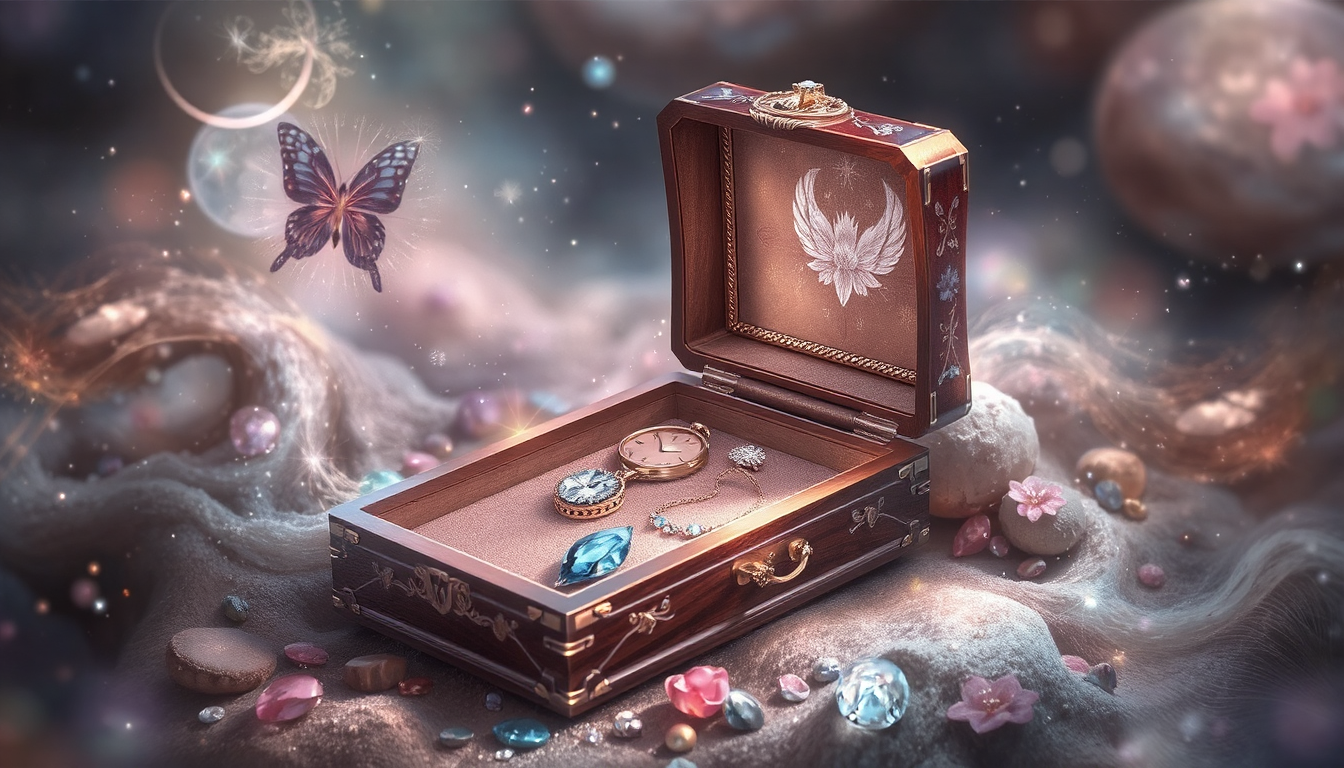
“Low price” can be confusing. A 20 box that falls apart will actually cost you more than a 40 that lasts 10 years. It takes knowledge of materials and good craftsmanship to locate value here.
Cheap jewelry boxes usually are not constructed from pricey timber, and that is certainly acceptable. It’s about choosing the right material to use based on what you need and can afford, and what it is and isn’t going to work for.
The Material Matrix: Pros and Cons
You ought to have an idea of what you’re purchasing. Affordable This is a table that shows common affordable materials.
| Material | Typical Price Range | Pros | Cons | Best For… |
| MDF with Faux Leather/Veneer | 20 – 60 | Wide variety of styles and colors; provides a luxe look for less. | Can be heavy; susceptible to peeling or dents if handled roughly. | A classic, multi-level dresser-top box for a medium-sized collection. |
| Plastic (Acrylic, ABS) | 15 – 40 | Lightweight, modern, often clear for easy viewing; easy to clean. | Can scratch easily; may look less premium than other materials. | Organizing earrings or rings in a drawer; modern, minimalist displays. |
| Velvet/Fabric Covered Cardboard | 10 – 25 | Very inexpensive and lightweight; soft on jewelry. | Lacks durability and structure; offers minimal protection from impact. | Travel inserts, drawer organizers, or very light, temporary use. |
| Paulownia or Pine Wood | 30 – 70 | Genuine wood at a lower cost; can be stained or painted. | Softer woods can dent easily; quality of finish can vary greatly. | Those wanting a customizable or rustic-style box with better longevity. |
Reading the Telltale Signs of Quality (or Lack Thereof)
It is the small details that expose the quality of a box. After years of experience, we know where to look for problems.
Here’s what you need to know before you buy:
-
The Lining: Touch the inside. Velvet is superior to felt for preventing scratches and delaying tarnish. Pay close attention to the corners and edges. Is the fabric smooth, or do you notice glue and peeling?
-
The Hardware: Clasps, hinges, and drawer pulls break most often on a low price jewelry box. Try opening and closing everything. Do hinges feel loose or tight? Does the clasp close properly? Weak, cheap-feeling hardware is a bad sign.
-
The Drawers: Pull out each drawer and push it back in. A good box is engineered to have drawers that slide open without hitch or hesitation. If they stick or if they sit crooked, the box is badly made.
-
The Stitching: With boxes that are covered in fake leather, check the seams. The seams should be straight and regular. If there are loose threads, crooked lines, or gaps, it is a sign that the box was made quickly and cheaply.
The Savvy Shopper’s Checklist: How to Choose a Low Price Jewelry Box That Lasts
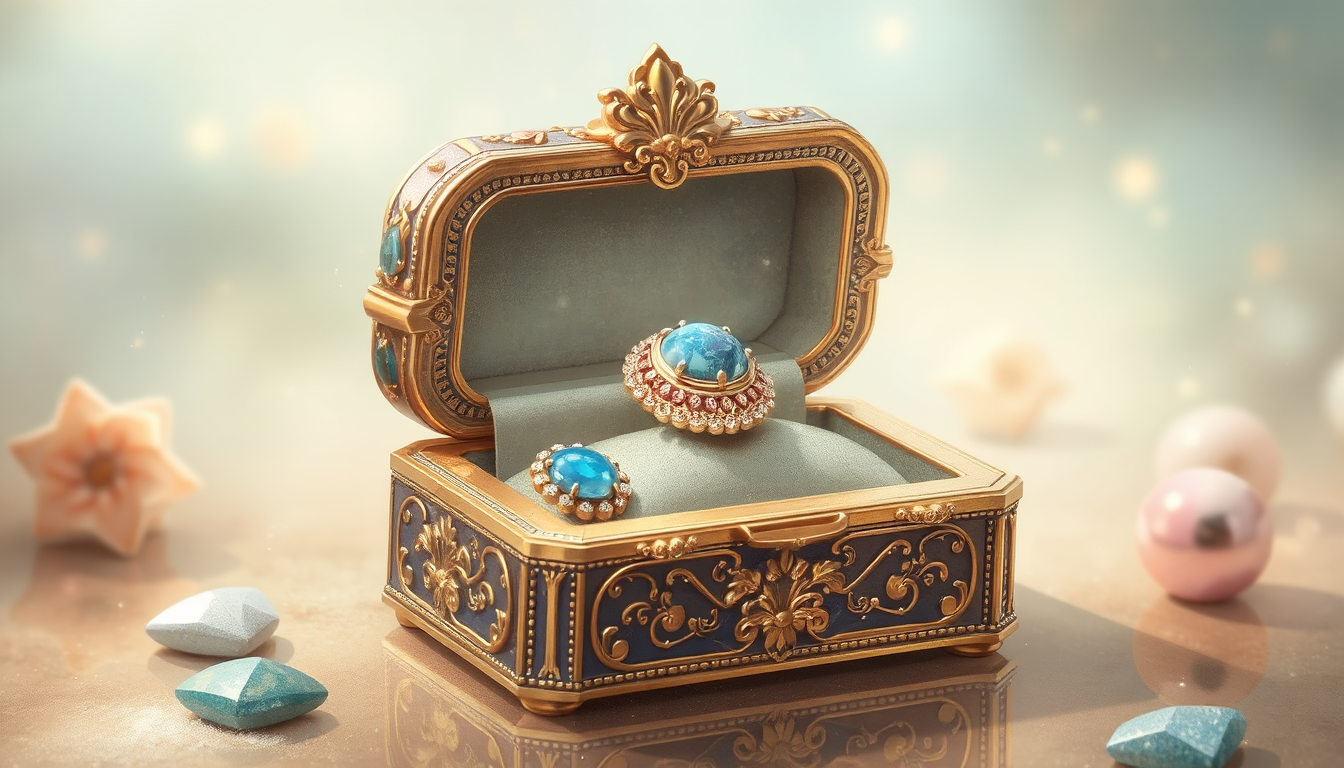
Now that you know quality when you see it, you’re ready to find the box that works for you. This isn’t about finding the least expensive option; it’s about finding something that pieces your jewelry collection well and that will work and last well. This list can help you make a good decision.
Step 1: Assess Your Collection
Take inventory of your jewelry before you start shopping. A beautiful box that doesn’t fit your jewelry isn’t useful.
Ask yourself these questions:
-
How many rings, earrings, necklaces, and bracelets do you own? This count determines what type and how many compartments you need.
-
Do you have many long necklaces that tangle easily? If so, look for boxes with hooks and pouches or long sections. Small squares will only cause problems.
-
Do you own big bracelets, statement necklaces, or watches? Make sure the box has deep drawers or large sections for these bigger pieces. Shallow dividers won’t work.
Step 2: Match Features to Your Needs
How the box looks matters as much as what the inside layout is. Functionality is most important. Don’t look at just one feature; consider how the overall box will work for your jewelry.
Consider these key features:
-
Dividers: Are they fixed or removable? Removable dividers offer great flexibility as your collection changes, letting you create larger spaces when needed.
-
Ring Rolls: If you have more than a couple of rings, get ring rolls. They organize and don’t give you scratches.
-
Mirror:A mirror is convenient for trying on earrings or a necklace. However, if your box will be near a wall mirror, you might want more storage instead.
-
Lock and Key: Quite a few cheap boxes include a small lock. Be honest about what it accomplishes. It’ll prevent casual snooping, but it won’t stop a thief. Test it to be sure it works, but don’t let that be a deciding factor.
-
Portability:If you will be a frequent traveler, consider whether you’s want your primary box to also be feasible to take on the road. It’s usually better to have a full-size box at home along with a small travel case.
Step 3: The Final Inspection (Your Pre-Purchase Checklist)
You have already discovered a box with all of the features you need for your own collection. Before purchasing, perform this quick check to keep from getting burned.
-
Stability: Put the box on a flat surface. Does it sit flat, or does it wobble? Wobbling means the frame is warped or the base uneven.
-
Odor: Open the box and smell it. A strong chemical smell is a red flag. It means cheap glues and materials were used, and the smell might last for weeks.
-
Finish: Examine the box is it good on both inside and outside. Look for scratches, dents, chipping, or mismatching patterns. These issues are only going to worsen.
-
Functionality: This is most important. Open every drawer. Lift every lid. Try every clasp. Turn the key in the lock. Ensure that all the moving parts work well and move.
Beyond the Obvious: Where to Find Hidden Gems and Creative Solutions
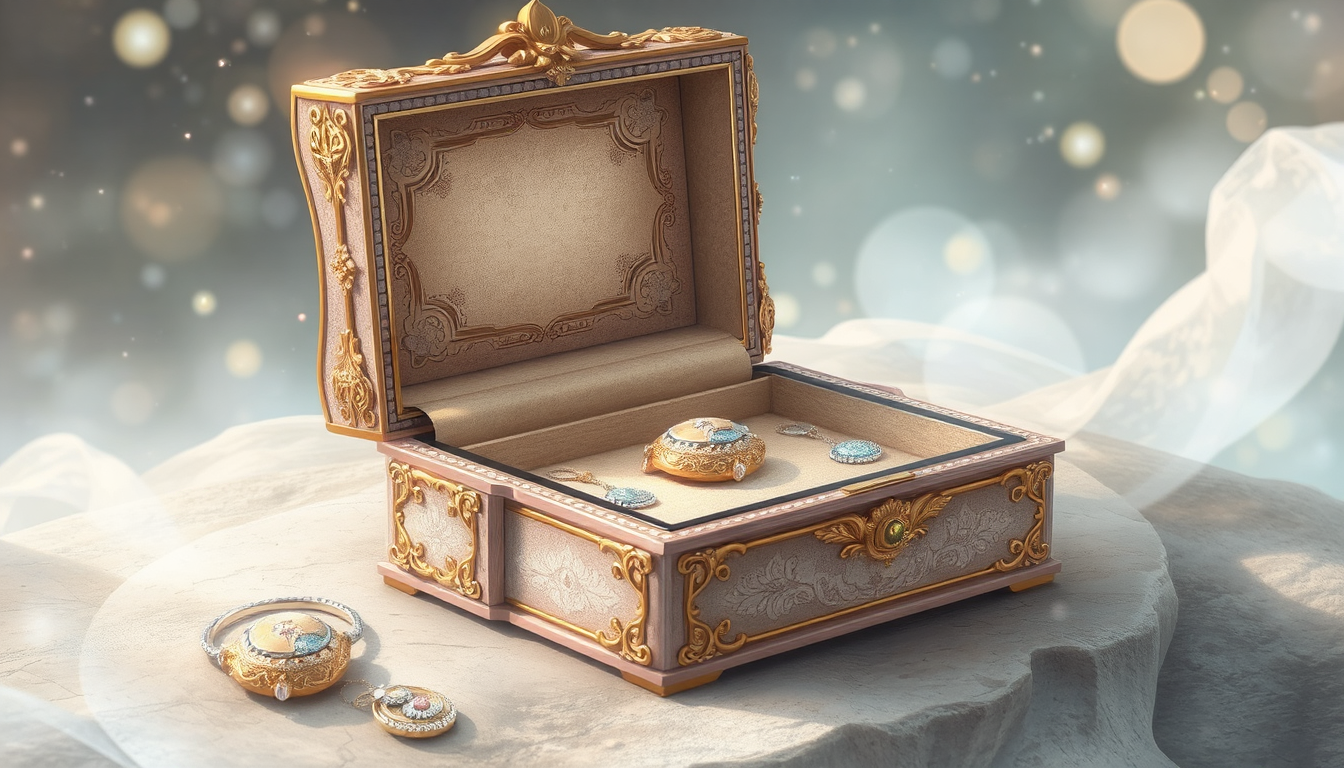
The ideal storage is not always a traditional jewelry box. The key to all of this is keeping components separate so they don’t tangle up and scratch each other. You are free to be creative and you can find great solutions in unusual places.
Think Outside the (Jewelry) Box: Creative Upcycling Ideas
Some of the best storage options aren’t marketed as jewelry organizers. It just requires creativity to discover the effective, and inexpensive alternatives.
Try these ideas which seem to work well:
-
Antique Tea Cups: A pretty, thrifted teacup and saucer serves as an excellent dish for your rings, brooch or stud earrings on your dresser.
-
Fishing Tackle Boxes: These work very well as organizers. The clear lids and adjustable dividers are great for sorting beads, backings, and a lot of pairs of earrings.
-
Wooden Cutlery Trays:A wooden cutlery tray can be a fabulous drawer organizer if it has been around for years. Line each of the long parts with felt, and you have a great spot for necklaces.
-
Ice Cube Trays:In a drawer, an inexpensive way to keep pairs of small to medium earrings divided is in simple silicone ice cube trays.
Smart Shopping Destinations
Look beyond big stores to find unique and affordable options. You’ll often find better quality for the price.
-
Etsy: This is a godsend for handmade wooden jewelry dishes, small ceramic ring holders or customized boxes from smaller artisans. You can buy solid wood door options that you don’t find at the big stores.
-
Thrift Stores & Flea Markets: For vintage jewelry boxes. You might find a solid wood box that simply needs to be cleaned out and relined to be far better than any new option at the same price.
-
Craft Stores: Scan for unfinished pine or paulownia boxes in the woodcraft area. For just a few dollars, you can buy a good wooden box to paint and line yourself and have a custom, high-quality thing without anyone else’s logo on it.
Conclusion: Your Perfect, Affordable Jewelry Box Awaits
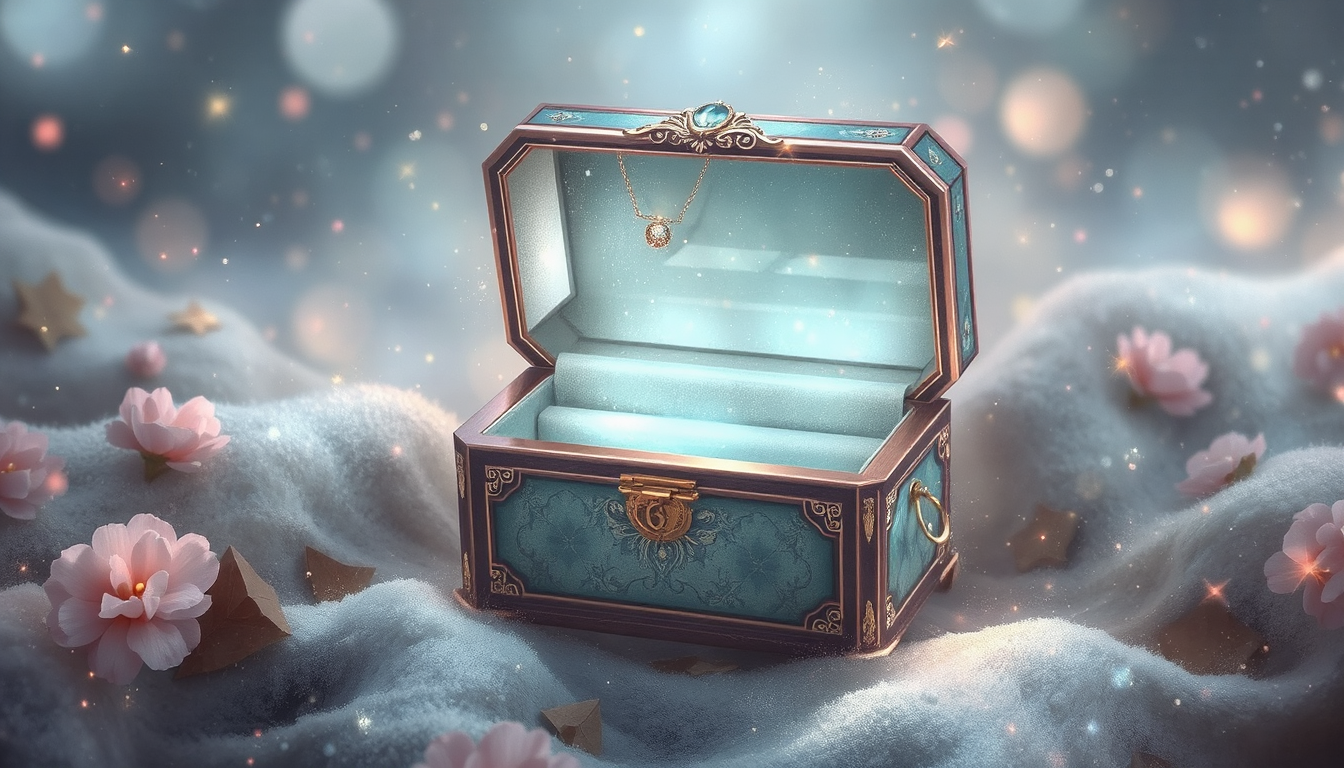
Finding a good, low price jewelry box isn’t about luck; it’s about knowledge. You now know how to identify true value.
Step into the world of jewelry storage that saves you time, space + keeps your jewelry at your fingertips with this over the door jewelry organizer! Keep these three “keys” in mind for success:
-
Know Your Materials: It’s going to help you a lot in the decision-making process if you know the differences between MDF, plastic, and cheapo wood.
-
Prioritize Your Needs: When you plan on choosing a layout and the features of a jewellery box, decide and pick according to your requirements.
-
Inspect Before You Buy: Use the quality checklist to check for stability, hardware function, and finish.
With this guide, you will be able to discover a chic, functional, and well-made jewelry box that you will treasure for many years.
FAQ
-
What materials offer the best value in a low price jewelry box?
Fake leather MDF 20-60 Polywood/Paulownia or Pine 30-70 Durable real wood. 15-40 have some great Plastic options for modern, minimalistic display cases. -
How can I tell if a low price jewelry box is good quality?
Inspect the lining (velvet is better than felt), make sure the hardware works, that the drawer opens smoothly, that the stitching on faux leather is good. Steer clear of boxes that smell like chemicals or have shakier bottoms. -
What features should I look for in a jewelry box for necklaces?
For necklaces, particularly of the long variety that can easily knot up, find boxes that have dedicated hooks, pouches or long sections — not small compartments. Deep drawers accommodate statement pieces. -
Where can I find unique, affordable jewelry storage options in 2025?
In addition to retail stores, try Etsy for artisanal boxes, thrift stores for vintage versions in need of a little love, or craft stores for unfinished wood boxes you can customize. -
Can I find alternatives to traditional low price jewelry boxes?
Yes! Creative options include old teacups for rings, fishing tackle boxes for earrings, wooden cutlery trays filled with felt for necklaces and silicone ice cube trays for keeping small pieces in order.


